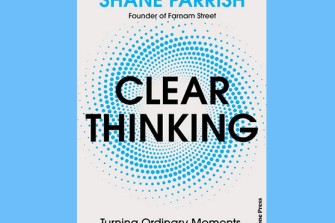The perspectives offered by this author make this a fascinating read. An African-born woman, Dambisa Moyo joined her first major board at age 39, which was unusual enough. She was also an economist and prize-winning writer, rather than from the ranks of management. She has served, and continues to serve, on the boards of major multinationals, including SAB Millers, Barclays and Barrick Gold.
The book is recent enough to embrace the Covid world and reflect on debacles such as Theranos and WeWork. It focuses on the ‘big end of town’, which is interesting in itself. But Moyo makes her observations more broadly relevant. The second half of the books focuses on change and challenge in the boardroom and, as the final chapter is entitled, the need to ‘innovate or die’.
Moyo addresses the diversity issue early and returns to it later. Simply put, if you cannot add value, you are occupying a seat belonging to someone else. There is also no lack of talented women. If you confine your search just to the C-suite, then you are not working hard enough on recruitment.
In her ten years of service, Moyo has witnessed massive restructuring stemming from share price collapse, the death of a chairman while in office, a revolving door of CEOs, a $100 billion sale, huge regulatory fines, activist shareholders, Brexit and asset expropriation by a host government.
She acknowledges corporate failure and malfeasance but concludes we are better off with a reforming approach, which should start with boards. In a short section, she outlines where boards have come from and some of the major variants around the globe. Many structural elements have not changed markedly over time. Her view is that boards are tasked with three primary matters:
setting strategy, hiring the leadership, and safeguarding the company’s culture, ethics and values. The first half of the book addresses these in turn. She notes that this is not a ‘tell all’ book — that would be irresponsible—but she issues the challenge that boards need to and can do better and, in particular, they need to use their power wisely.
How the board of a major organisation engages with strategy is discussed. She suggests that, generally, this should be done in two or three days of intense activity. She makes it clear that them mission must be well defined and that it acts as the organisational compass, codifying the bounds of ambition. This rings true no matter the size of the enterprise.
Moyo notes that ‘the governance structure is meant to allow for – and even encourage – frequent disagreement between the board and management’ and that this can only work in a climate of trust. In the contexts outlined in the book she observes that these conversations are necessarily about macro factors and the long term but that the unexpected (Covid) can change the conversation very quickly. She notes that no company has the right to survive and constant vigilance over strategy is the most important board function. This is in a frame of limited knowledge and an unpredictable future.
The second of the board responsibilities—hiring and firing the CEO—is coloured by the prevalent US practice of the CEO being on the board and sometimes also the chair. This practice is now in slow decline. This section has good, detailed discussion on wartime/peacetime CEOs, values and not shooting the messenger for performance issues. She suggests that contemporary CEO recruiting must include rigorous examination of candidates’ values and how they will guide organisational culture.
The adjunct discussion of board memberships is less solid. The assertion that the core of the board should consist of people ‘who have previously run large organisations and served as CEOs’ is seemingly at odds with her own entry to the boardroom and later discussions on what is needed to face the future. Equally it misses the point that the two jobs are fundamentally different, and that
many people fail to make the transition from senior management to the necessary perspective of a director. In the context of major company boards, Moyo suggests that expertise in geopolitics and technology are essential around the table. She then goes on to make the strong case for diversity and inclusion citing supporting performance research. The section concludes with the observation
that historic practices have ‘traditionally left many boards populated by members who look and think alike – a veritable death knell for a twenty first century company’.
The book moves to the changing world and pressing issues. The section entitled A Culture Revolution is about the move away from Friedman’s advocacy for shareholder primacy. As Moyo notes, this is an evolving and rapidly changing space, but it is the board’s task to articulate the role the corporation will play and how it will benefit society, then to ensure that management gives an honest articulation of that role. The board must navigate the often-conflicting priorities of employees, consumers, governments and shareholder.
There is a solid discussion about two broad categories of culture, the first being the non-negotiables: professionalism, ethics and trust. The other is the ‘new corporate cultural frontier’, concerning human rights, social licence, equality, climate change, environment…it’s a long list. It’s a nuanced and complex space for a multinational company and this is an interesting window into the
discussion.
The penultimate chapter works through five critical risks no board should ignore: a more siloed and protectionist world; a rapidly shifting investment landscape; new technologies; the global war for talent; and, ultimately, the folly of short termism. In these sections the author’s background as macro economist really adds value.
The final chapter—Innovate or Die—is subtitled ‘The Existential Crisis of the Twenty-First Century Board’. Moyo contends that companies and boards need to adapt and be more assertive, or face economic decline or death. The information asymmetry suffered by boards who rely too much on management for data should be balanced with a consistent search for third-party input, especially
around structural and long-term trends.
Ethics and values need to be at the centre and should form an integral part of CEO recruitment. She advocates for a standing ethics committee. In her concluding statements she does not shy away from discussing poor performance: ‘lay people and shareholders have seen immense wrongdoing – including value destruction and scandals – without any obvious repercussions for senior management or the board itself’. Experienced practitioners offer criticisms of ‘weak boards or weak board members, who are seen by management to offer limited and unhelpful input into board discussions’.
But, in her view, there remains a role for boards, suggesting this is where the tough decisions are made. She cites Barack Obama: ‘by the time something reaches my desk, that means it is really hard. Because if it were easy somebody else would have made the decision’. She urges board members to ‘embrace humility rather than hubris, remaining vigilante and malleable, as they lead in an
increasingly chaotic world’.
Worth a read? Certainly. The book takes a while to warm up and as Moyo gets to dealing with thefuture it becomes a fascinating and crucial reflection. Read in conjunction with Stitger and Cooper’s Boards that Dare, (reviewed here) it provides an excellent frame for what major company boards of the future need to look like and the issues they must address.







